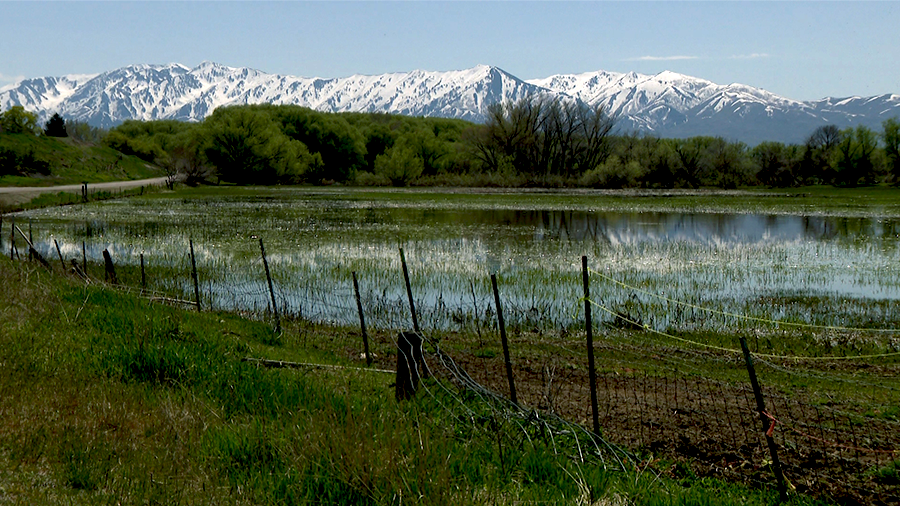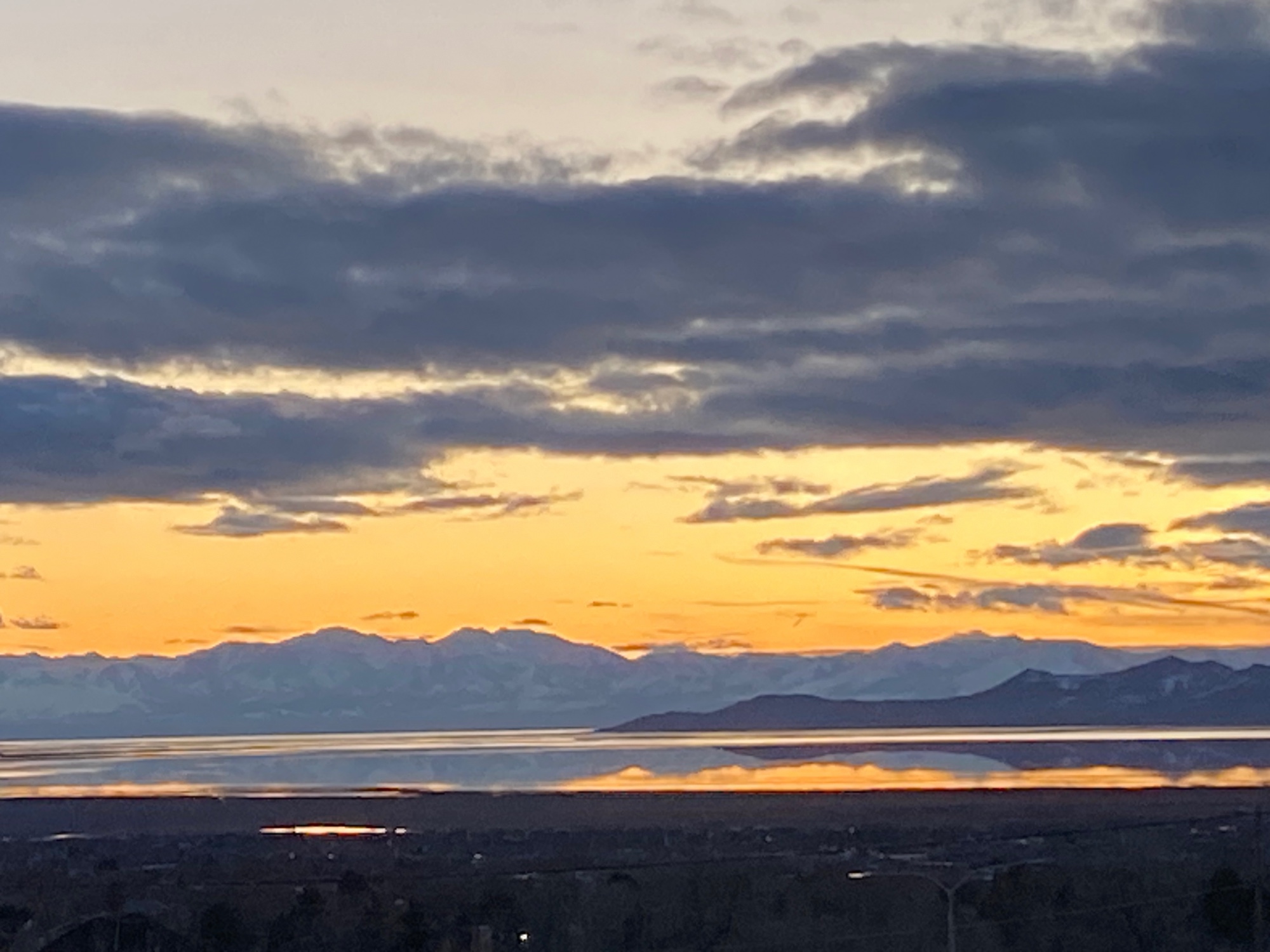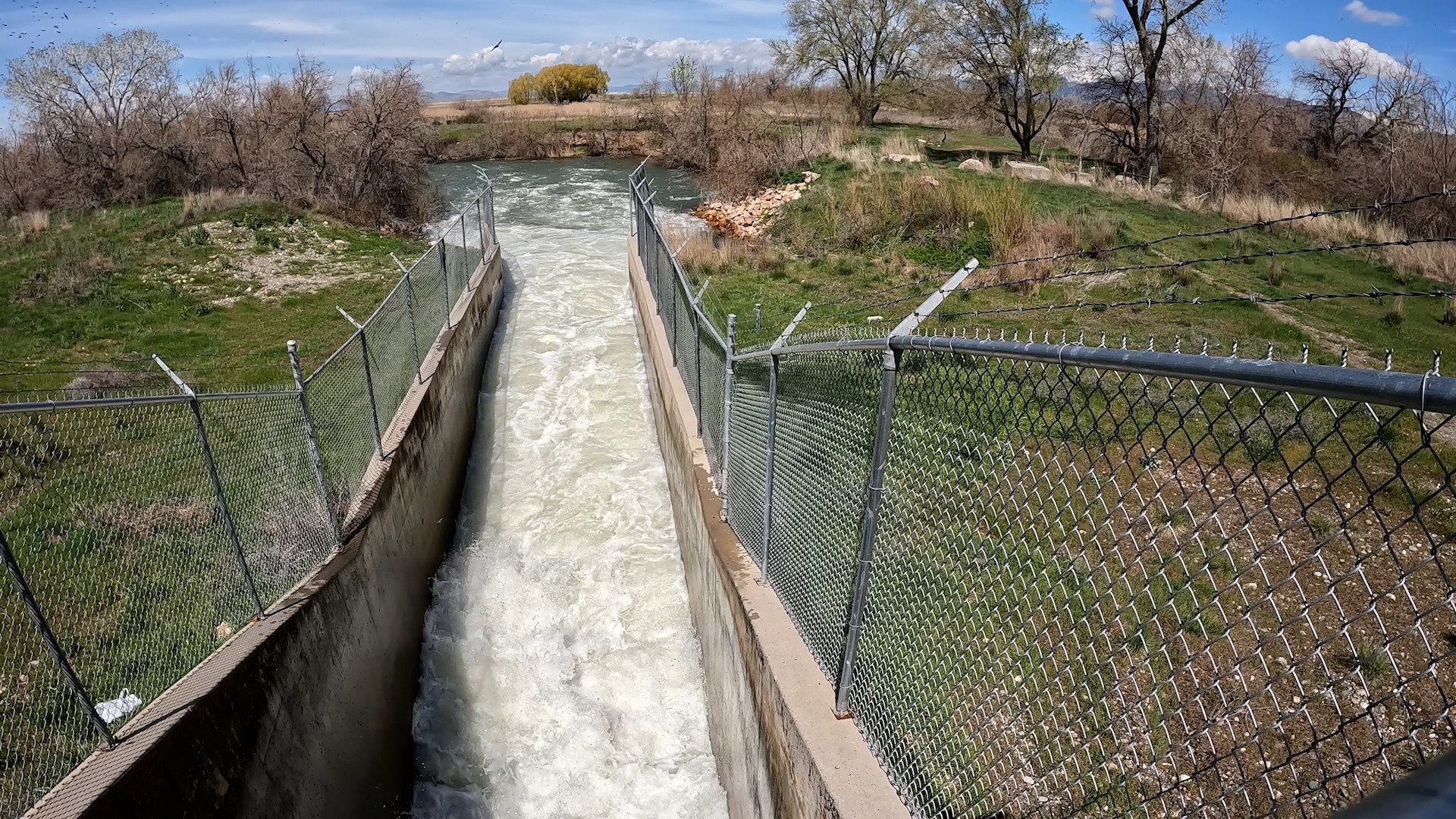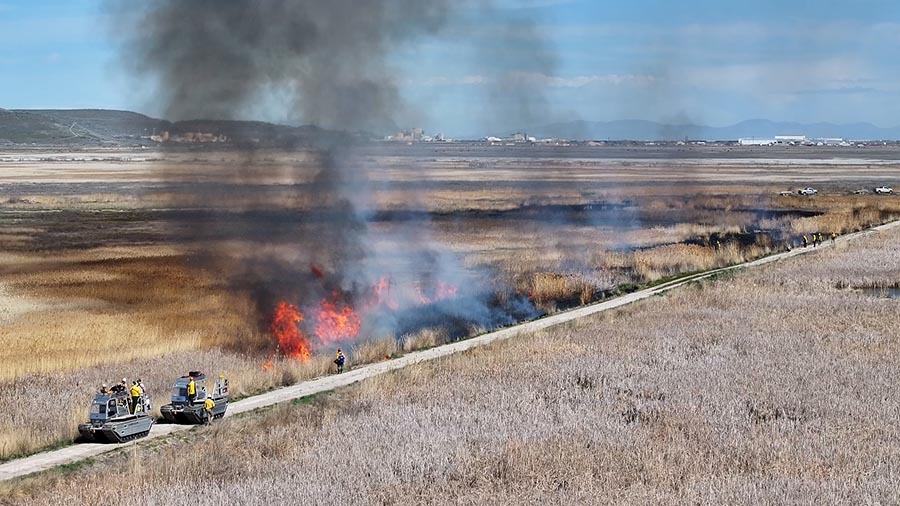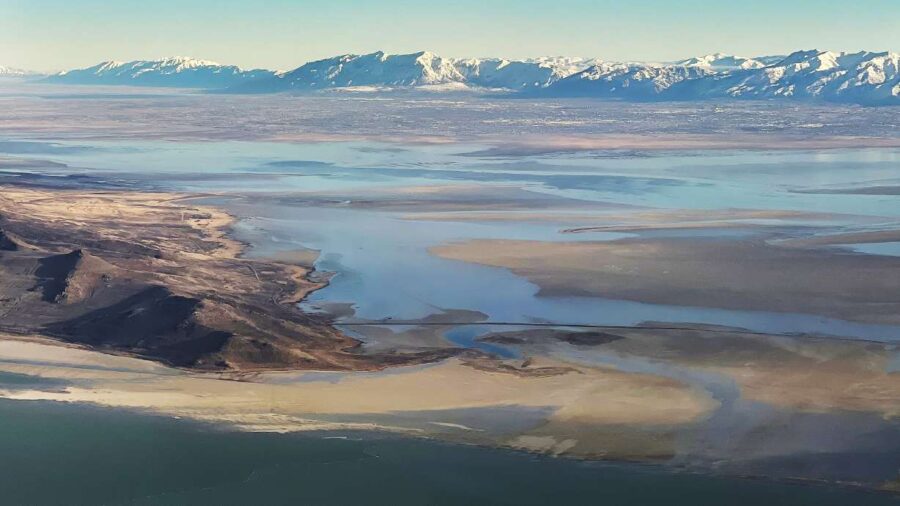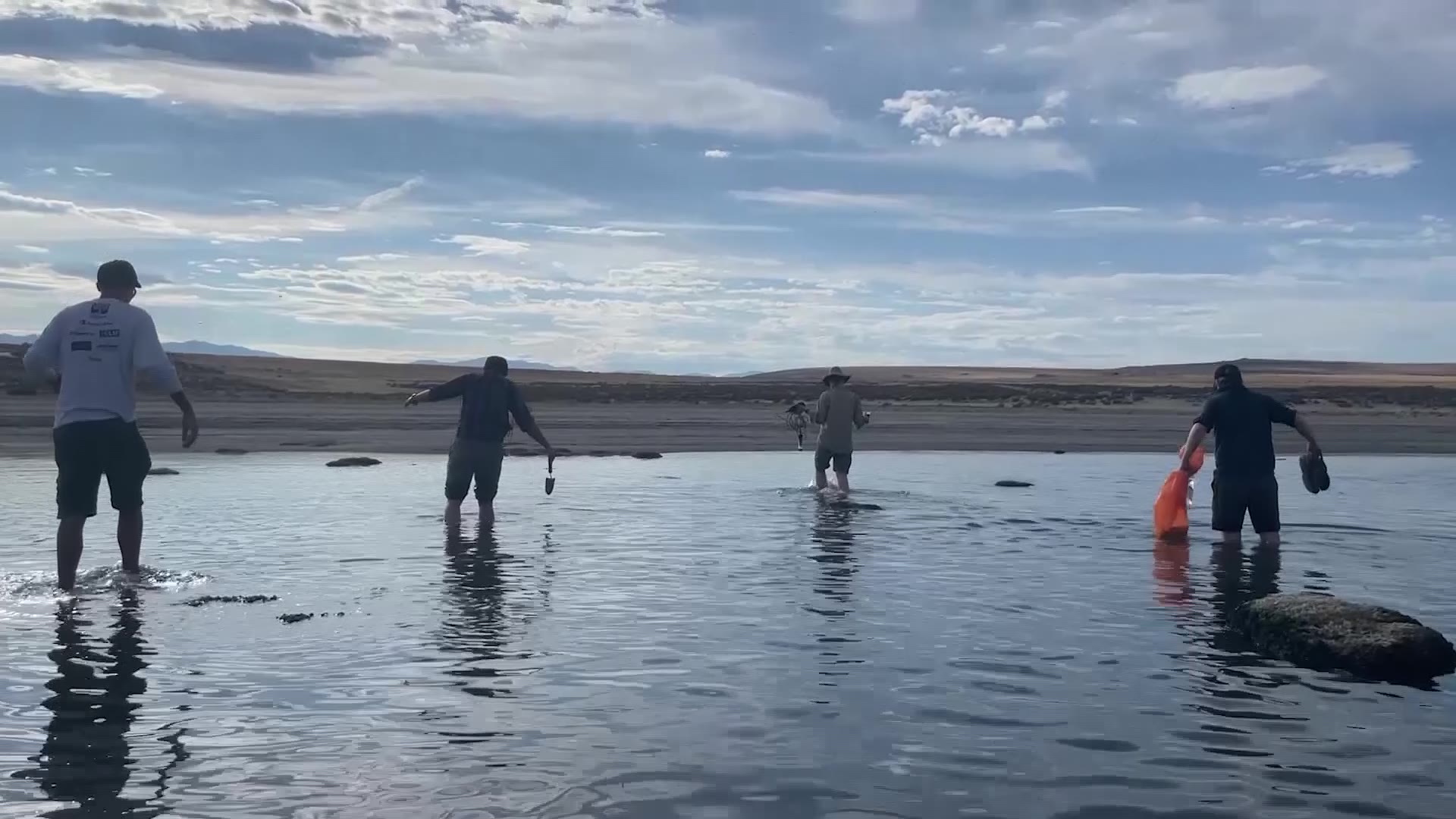‘Our state is up to the task’: New initiative seeks to solve Great Salt Lake’s woes
Oct 4, 2023, 11:24 AM
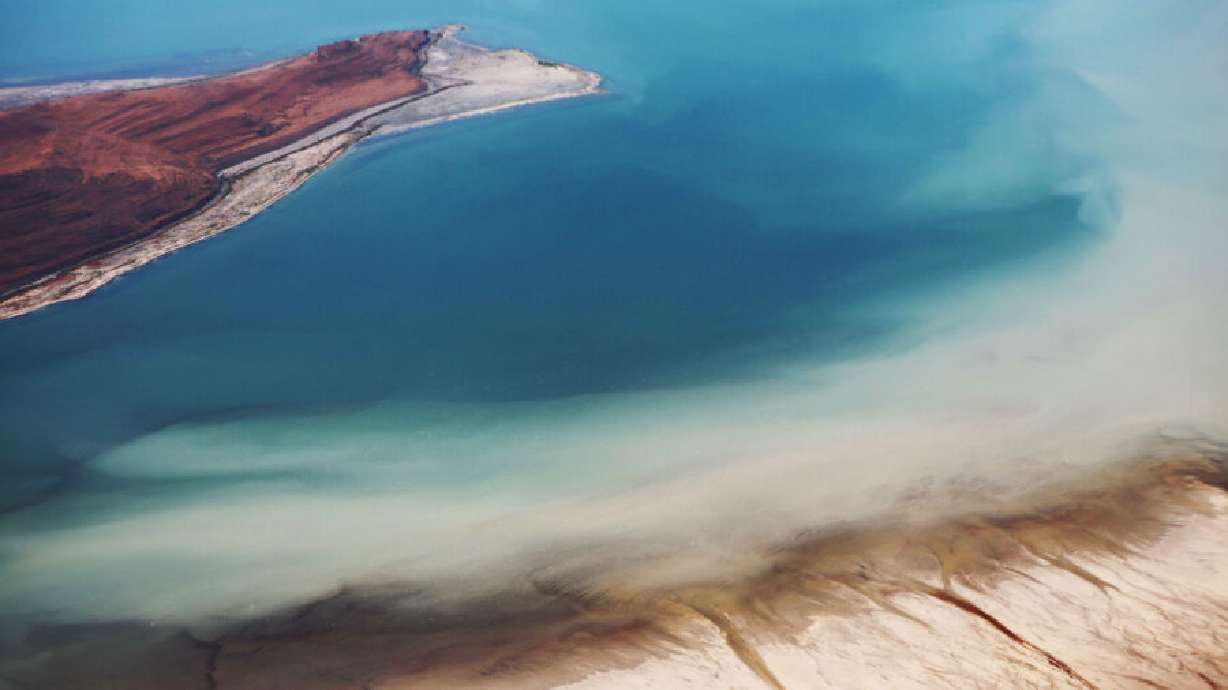
Water levels are pictured in the Great Salt Lake on July 20, 2023. A group's new initiative seeks to build up a "public action network" of 100,000 people to get more water to the lake with the goal of restoring it within the next 10 years. (Jeffrey D. Allred, Deseret News)
(Jeffrey D. Allred, Deseret News)
Editor’s note: This article is published through the Great Salt Lake Collaborative, a solutions journalism initiative that partners news, education and media organizations to help inform people about the plight of the Great Salt Lake.
SALT LAKE CITY — A group of researchers and other prominent figures are seeking the help of thousands to solve the Great Salt Lake’s woes once and for all, as the lake’s water levels remain well below the healthy mark even after a welcomed bump from Utah’s record snowpack earlier this year.
The nonprofit Conserve Utah Valley is behind the new initiative called Grow The Flow, which is led by academic minds at BYU and the University of Utah. Its leaders announced Wednesday that they want to build up a “public action network” of 100,000 people to get more water to the lake with the goal of restoring it within the next 10 years.
“Rather than blaming or claiming credit, we want to bring the public together and provide technical and public support for our lawmakers and managers,” said Ben Abbott, a professor of ecology at BYU and the group’s executive director, in a statement.
Wednesday’s announcement comes as the Great Salt Lake’s levels continue to slide near the end of the irrigation season.
The lake’s southern arm, which reached a little over 4,194 feet in elevation during the season’s snowmelt, is back down to about 4,192.2 feet elevation, according to U.S. Geological Survey data. The agency’s data also shows that the lake’s northern arm is at 4,189.1 feet elevation, close to the lake’s record low of 4,188.5 feet elevation set last fall. Both arms are also well below the lake’s minimum healthy level of 4,198 feet elevation.
Its decline, primarily caused by water overconsumption, poses environmental and economic concerns, especially as more of the lake’s toxic bed turns to dust that blows into neighboring communities along the lakeshore. Abbott helped author an alarming report that found the lake was about five years away from an environmental collapse before this year’s snowmelt bump; other researchers say this year’s bump added about two years to that estimate.
He contends there’s plenty of “fear and frustration” surrounding the lake’s future right now, and Grow The Flow’s goal is to turn that angst into action. Specifically, it wants to assist the state’s effort to get water into the Great Salt Lake with four “main pillars”:
- Coordinate a community of 100,000 volunteers working in a “public action network” to support water conservation.
- Bring together scientists, engineers and innovators from both public and private sectors to build a research coordination network that works on overcoming “technical challenges,” like water monitoring and conservation.
- Work with policy experts and lawmakers to help draft “innovative” water legislation that can potentially reverse the lake’s decline.
- Raise financial support for Great Salt Lake through fundraising, policy and outreach.
In addition to faculty and students from multiple universities in the state, the initiative’s leadership includes environmental author Terry Tempest Williams and Utah Film Center co-founder Geralyn Dreyfous.
Those behind the new push say Utah leaders have made “substantial improvements to state law” in recent years to address the declining lake, but these efforts have yet to create “a measurable impact on the lake.” That’s where they want to step in and help the state — and other groups also fixated on solving the lake’s struggles — find ways to restore the Great Salt Lake, by holding informational events and sharing useful information.
They also want a network of people from “all walks of life,” throughout the region, to be involved as these ideas are formed and considered.
The nonprofit is forming as the Utah Legislature is expected to consider more water and Great Salt Lake-related bills and appropriations during the next legislative session, which begins on Jan. 16, 2024.
“Looking at lakes like this globally, no one has cracked the code. Our state has already taken important steps to rise up to the challenge. Still, it’s going to take a lot of effort, out-of-the-box thinking and willingness to change to bring the lake back from the brink,” said Brigham Daniels, a law professor at the University of Utah and Grow the Flow’s policy director. “I think our state is up to the task.”


